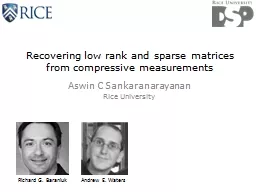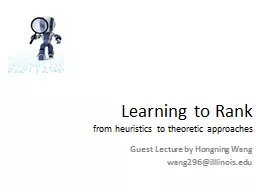PPT-Online Rank Elicitation for
Author : joedanone | Published Date : 2020-08-27
PlackettLuce A Dueling Bandits Approach Balázs Szörényi Technion Haifa Israel MTASZTE Research Group on Artificial Intelligence Hungary Róbert BusaFekete
Presentation Embed Code
Download Presentation
Download Presentation The PPT/PDF document "Online Rank Elicitation for" is the property of its rightful owner. Permission is granted to download and print the materials on this website for personal, non-commercial use only, and to display it on your personal computer provided you do not modify the materials and that you retain all copyright notices contained in the materials. By downloading content from our website, you accept the terms of this agreement.
Online Rank Elicitation for: Transcript
Download Rules Of Document
"Online Rank Elicitation for"The content belongs to its owner. You may download and print it for personal use, without modification, and keep all copyright notices. By downloading, you agree to these terms.
Related Documents














